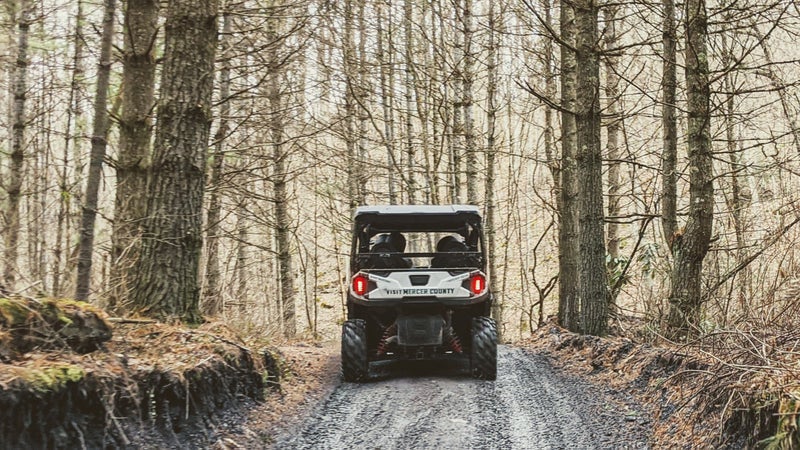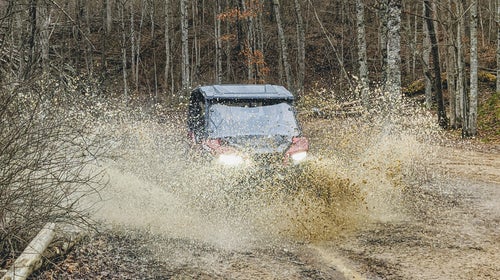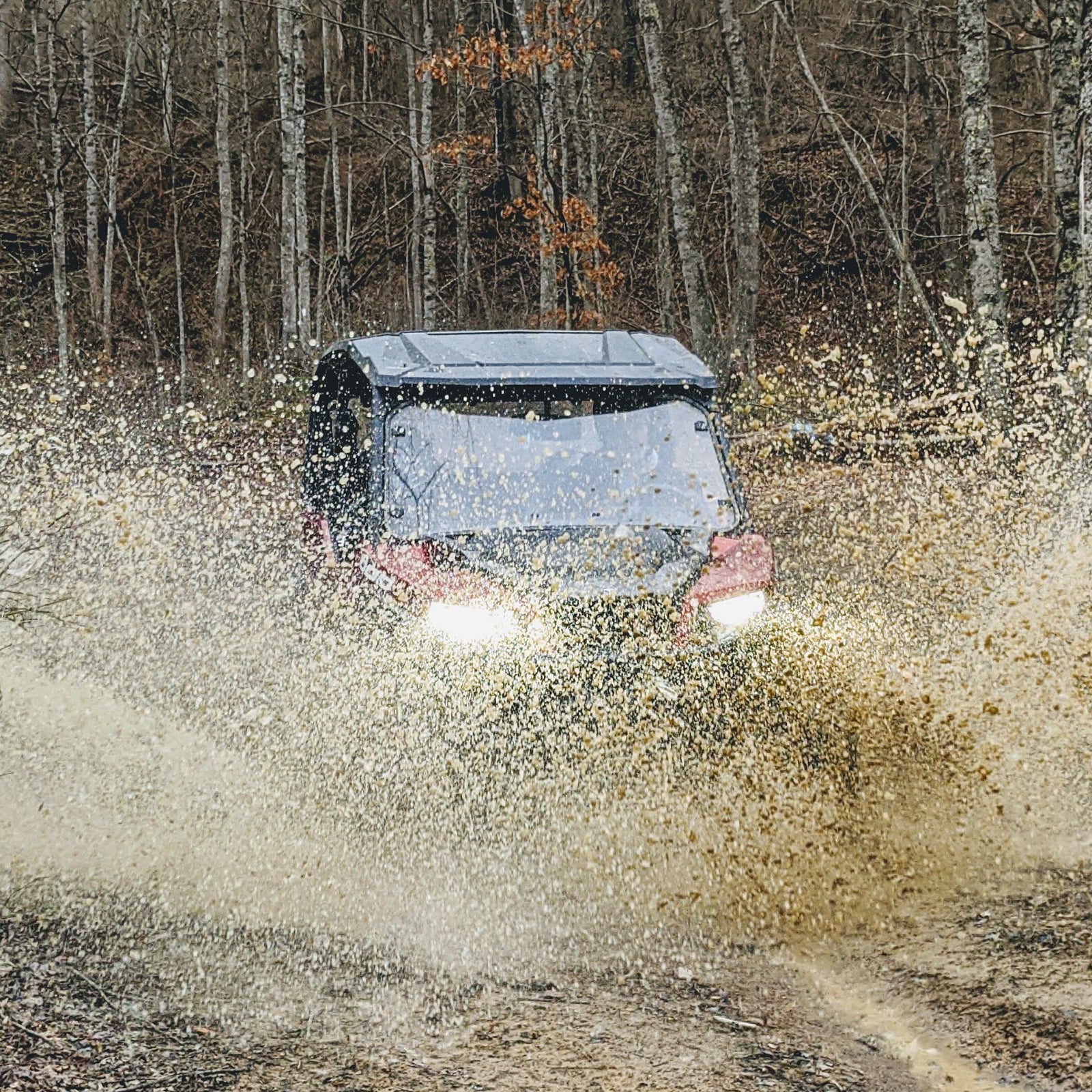West Virginia has the highest average elevation of any state east of the Mississippi. ThatÔÇÖs not due to╠řthe mountainsÔÇöits╠řtallest peak is still lower than DenverÔÇöbut the╠řhills that roll out like endless moguls.
More than a century╠řago,╠řtowns rose up in the valleys, built from coal fortunes. In the late 1800s, the city of Bramwell used to╠ř. Its╠řbank was once so flush with cash that its janitor would . Nearby, the city of Bluefield was built next to the worldÔÇÖs richest coal deposit, which became╠řa mini metropolis and╠řearned╠řit the nickname Little New York.
But things have changed. Most of those towns╠řare╠řempty and crumbling now. In Bluefield, the population has dropped by half, to , and a quarter of its residents live in poverty. In Bramwell, a few rehabbed mansions share the streets with a largely barren business district and derelict homes that stand as a reminder of what was. In the 1980s, , a number that has since╠ř, despite╠ř.
But for the first time in a generation,╠řafter many have accepted╠řthe fact that coal money isnÔÇÖt going to come back, optimism has returned to╠řthese valley towns. Even with the nationÔÇÖs╠řeconomy imploding from the pandemic, some West Virginians finally see a way they could turn things around: ATV tourism.
ItÔÇÖs possible thanks╠řto more than 700 miles of doubletrack trails cut through those endless hills. In the past 20 years, motorcycle and riders have arrived in increasing numbers, and last year the state sold more than╠ř56,000 permits for╠řthe ,╠řa professionally managed network╠řamid╠řbeautiful old-growth forests. This enterprise╠řhelped fuel a West Virginia tourism industry that has experienced╠řa╠ř. Today╠řÔÇömore than the coal industry employed a generation ago.
ItÔÇÖs perhaps╠řa bit ironic that the Hatfield-McCoy Trails got their start in large part╠řfrom╠řa man╠řwho had no interest in using them.
In 1989, John English didnÔÇÖt ride ATVs, even though╠řhe was director of state government affairs for the national . He met up for lunch one day with Leff Moore, now deceased, who was executive director of the West Virginia Recreational Vehicle Association. Moore started talking about the former coal-mine roads. English, now 75, recalled, ÔÇťA little light came on, and we both started thinking, Gee, how could we maybe take advantage of that?ÔÇŁ
, especially in the southern part of the state, where . The two men╠řrealized that if╠řthey could convince the companies of those trailsÔÇÖ╠řtourism potential, they could conceivably develop a network unlike any other in the world.
The companies had sliced╠řtrails through╠řvirgin hemlock╠řforests more than a century ago to get workers to the mines, often using school buses with jacked-up suspensions and off-road tires.╠řDave Preston, 63, still recalls bouncing along on gravel roads on his way to work. HeÔÇÖs a third-generation coal miner from Matewan, the West Virginian town memorialized in by the same name that documented bloody conflicts between miners and the companies that mistreated them. In 1974, at just 18, Preston went to work in the mines.
ÔÇťWell, youÔÇÖre from coal country. It was in your blood. ItÔÇÖs dangerous work. ItÔÇÖs hard work. But it paid good,ÔÇŁ Preston said. ÔÇťThe money in the mine was so good, you had school teachers quitting to go work in them.ÔÇŁ
Miners would make upward╠řof six figures a year, Preston remembered. But he was laid off in 1983, with the local coal mines nearly exhausted, and he picked up╠řa job at an auto-rebuild shop. ÔÇťIt wasnÔÇÖt a real good time,ÔÇŁ╠řhe said.╠řÔÇťNobody likes being unemployed. I kept a job, but it was like a quarter of the money.ÔÇŁ

In his downtime, Preston and other former╠řminers began taking╠řtheir ATVs out to explore the╠řtrails they used to ride to work. The affinity for the machines, he said,╠řis something West Virginians have in their blood. YouÔÇÖll often see people shuttling their kids to school or pulling up to a McDonaldÔÇÖs drive-through on one.
But the problem with the former coal roads becoming recreational trails, English realized back in 1989, was that none of them connected. Mostly, they ended at the mines and offered╠řfew scenic destinations.
So in the 1990s, English and the other trail founders set out to change things. They convinced the state legislature to allocate $1.5 million to create an authority that would╠řoversee trail maintenance, sell permits, and take on liability in case anybody got injured. Then they brought in a team from the Bureau of Land Management to suss out how to connect everything into what would become a thousand╠řcontiguous miles of trails╠řand draw up the first maps of the network.
Named after╠řthe families who once attracted international attention for a blood feud that started over a stolen hog, the Hatfield-McCoy Trails opened in 2000. Nobody had any idea what to expect next, said Jeffrey T. Lusk, executive director of the . ÔÇťWe were so concerned,ÔÇŁ Lusk said. ÔÇťWe were thinking, Oh my goodness, when we turn this on, is anybody going to come use them?ÔÇŁ
That first year, the state sold 5,000 permits (which cost $26.50 for residents and╠ř$50 for out-of-state visitors), far more than anyone╠řexpected. ÔÇťIn those first few months, we knew we had something. We had something people wanted to do,ÔÇŁ Lusk said.
It wouldnÔÇÖt take long for╠řinterest in the trails to turn into a business opportunity for a state that needed it badly.
Cameron Ellis grew up on top of a cleared hillside near the town of Gilbert, West Virginia. His father, grandfather, and great-grandfather had all mined coal in the hill. It dried up╠řbefore Ellis came along. As a little kid, he knew the familyÔÇÖs land only for what it had once been.
Ellis, 29, was in elementary school when the trails opened, and his family was among the first to see the potential. They added ten primitive campsites to their property in 2002. With no facilities, the campers showered╠řat the townÔÇÖs community center.
Those first guests were all one demographic: young men traveling in groups. That changed, however, after╠řa shift in the ATV industry that became a big reason for the success of the Hatfield-McCoy Trails. In the early 2000s, ATVs were╠řessentially four-wheel motorcycles, with controls on the handlebars and╠řan open cab. Then the industry switched to a vehicle known as a side-by-side;╠řlargely enclosed, it has╠řa car-like steering wheel╠řand pedals.╠řThe demographic of the people arriving to the EllisÔÇÖs campground soon included families, with dad and mom and the kids all piling into four-seat machines.
The familyÔÇÖs now features╠ř20 primitive tent sites, 43 full-hookup campsites, 11 mountaintop cabins with╠řkitchens and baths, ATV╠řrentals, and a barbecue restaurant. It has welcomed╠řguests from every state in the nation and numerous╠řforeign countries.
ÔÇťIt was nothing but primitive when we first started,ÔÇŁ Ellis said,╠řÔÇťand weÔÇÖve built up to everything weÔÇÖve had now. Even just ten╠řyears ago, you wouldnÔÇÖt have thought it would grow into something so large. ItÔÇÖs a lifeline into southern West Virginia now.ÔÇŁ
Today the trails are╠řthe number-one draw in Mercer County, said╠řJamie Null, executive director of the local tourism board. Her organization, , even bought its own ATV╠řthree years ago, outfitting╠řit in green and white and╠řemblazoning it╠řwith the countyÔÇÖs name across the door. Null grew up in Princeton, West Virginia, in a family that wasnÔÇÖt very outdoorsy. But now she takes journalists and politicians on trips across the county in her Polaris General four-seater (and she╠řbought one for her own family). She sees a lot of optimism in the ATV-rental businesses and in hotels╠řlike outside Bluefield, which promotes itself as ÔÇťdesigned to meet the needs of ATV riders.ÔÇŁ
ÔÇťAs far as me having a crystal ball and saying this could save a town, who can do that?ÔÇŁ Null says. ÔÇťBut we have to look at the bigger picture and look at how we can revitalize our towns.ÔÇŁ
In the past five years, the trail system has added two new sections,╠řincreasing╠řHatfield-McCoy from 550 to 730 miles and╠řconnecting more towns that might benefit from that╠řsame kind of economic growth, said Lusk. Last year╠řthe trails saw a 12 percent uptick, with 56,258 permits sold, mostly to visitors from out of state.
ÔÇťItÔÇÖs a lifeline into southern West Virginia now,ÔÇŁ said Cameron Ellis.
Like all tourism-focused industries nowadays, Lusk is undoubtedly concerned with how COVID-19 will affect things, especially considering a good deal of his business happens in early spring. On March 21, , but that didnÔÇÖt last long; two months later, the state reopened them, and since then, riders have returned in numbers surpassing 2019 figures. During the closure, the state initiated╠řthe , and Lusk says that, so far, no trail-related businesses have been forced to close.
The biggest challenge currently╠řis a lack of supporting infrastructure. If the trails are to grow, the state needs more hotels,╠řrestaurants,╠řand shops to cater to riders. ÔÇťThese towns have the opportunity to reinvent themselves,ÔÇŁ Lusk╠řsaid.
The trails have undoubtedly changed things for Dave Preston, the former coal miner. In 1991, he went back to work underground and continued in the mines until 2013, when they laid him off again. It was then that he heard about a job as an ATV guide. He grew up in a family that ÔÇťknew how to eat off the land,ÔÇŁ and taking tourists out into the woods now is something that makes him proud, able to show off the countryside where he was raised. ÔÇťItÔÇÖs my cup of tea,ÔÇŁ he said. ÔÇťI grew up in the outdoors.ÔÇŁ
While some might look down on╠řmotor-powered ATV recreation on public lands, Preston explains that the vehicles╠řare the only way to access terrain that few would otherwise see. The trails are officially multi-use, but they are far too muddy in the winter and spring and too dusty in the summer╠řfor other modes of transportation. Even fat-tire bikes would get bogged down in the ruts or struggle on the inclines, and all of it would be laborious for hikers or horses.
On a trip into the woods of Mercer County earlier this year, Preston bombed through mud pits and maneuvered knobby wheels through ruts running with mud. His machine seemed unstoppable, and it easily forged╠řup steep╠řinclines, charged over exposed rocks, and blasted down hillsides.
He took a couple zooms through a mud pit for photos. Then he made a precipitous╠řdescent, followed the trail on a 90-degree turn, and stopped next to a near vertical hillside. Tucked between the roots of trees, he pointed out a cave the size of a kitchen window. A century ago, miners had drilled there to reach a small cut of coal. Preston picked up a chunk of black rock they left behind;╠řa streak of soot remained on his fingers after he tossed it back.
On the way out, the trail passed by a graveyard miles from anything, just perched atop a bald nob. Preston explained that his ancestors used to bury their dead out here in unofficial graves found along these trails, markers to a civilization thatÔÇÖs moved on.


